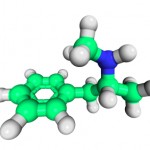I want to be perfectly clear: methamphetamine use is a terrible plague in our society. Although overall numbers are down over the past decade, we're still talking about a million plus people in the United States, many of whom are young and heterosexual. But, of course, that's not the only population group with members who abuse the drug; The CDC factsheet on its risk for HIV/AIDS stresses it can contribute to sexual risk behaviors, regardless of the sexual orientation of the user. I spoke recently to a long-term friend who is gay. I asked him about its use in the gay community and he replied, "Everyone I ever knew about who used meth is dead."
There's a brain chemical called dopamine that affects how we experience pleasurable activities. Lab experiments show this highly addictive and illegal drug can lead to considerably greater dopamine being released than either eating or having sex.
A user experiences a high, a "rush" much more intense than from any normal activity. But there's a problem; it doesn't last more than eight to 24 hours. And it's not as intense in succeeding uses. So that leads to a pattern of addiction, the need for not only repeated drug use, but more and more of the substance.
Chronic, repeated meth exposure, whether by oral ingestion, 'snorting", smoking or injection, clearly leads to damage in the brain, the teeth and the skin.
An online review by the National Institute on Drug Abuse, part of the National Institutes of Health, says imaging studies (e.g., MRIs) done on meth addicts show alterations in parts of the brain involved in motor skills, verbal learning, emotion and memory.
I went back to the PBS special, "How Meth Destroys the Body" and was stuck by the graphic photos of "meth mouth." A common sign of abuse of this drug is severe tooth decay. The cause is uncertain, but meth does lead to shrinkage of a user's blood vessels and the mouth requires an adequate blood supply to stay healthy. The addicts often binge on high-sugar foods and drinks; their mouths lack sufficient saliva to maintain optimal healthy oral tissue and, on a high, meth users often grind their teeth and, of course, forget to brush or floss.
Between the tooth decay, the increased physical activity frequently experienced and the failure to eat adequately, meth users lose weight and look older.
They also lose interest in any activities other than those related to obtaining and snorting or injecting the drug. Men may become impotent; women may lose their interest in sex.
So why don't we require simply prescriptions for the cold and allergy pills that contain psudoephedrine, the chemical I mentioned in my last post that is used in the production of methamphetamine? I read an article in the 20 December 2011 edition of the Annals of Internal Medicine which told of the widespread abuse of controlled substances in the United States. It wasn't describing illegal drugs, just ones that normally do require a doctor's prescription. Many of these can now be purchased on the Internet.
That series of photos of meth users mouths and "before" and "after" photos of addicts may be one place to start.





